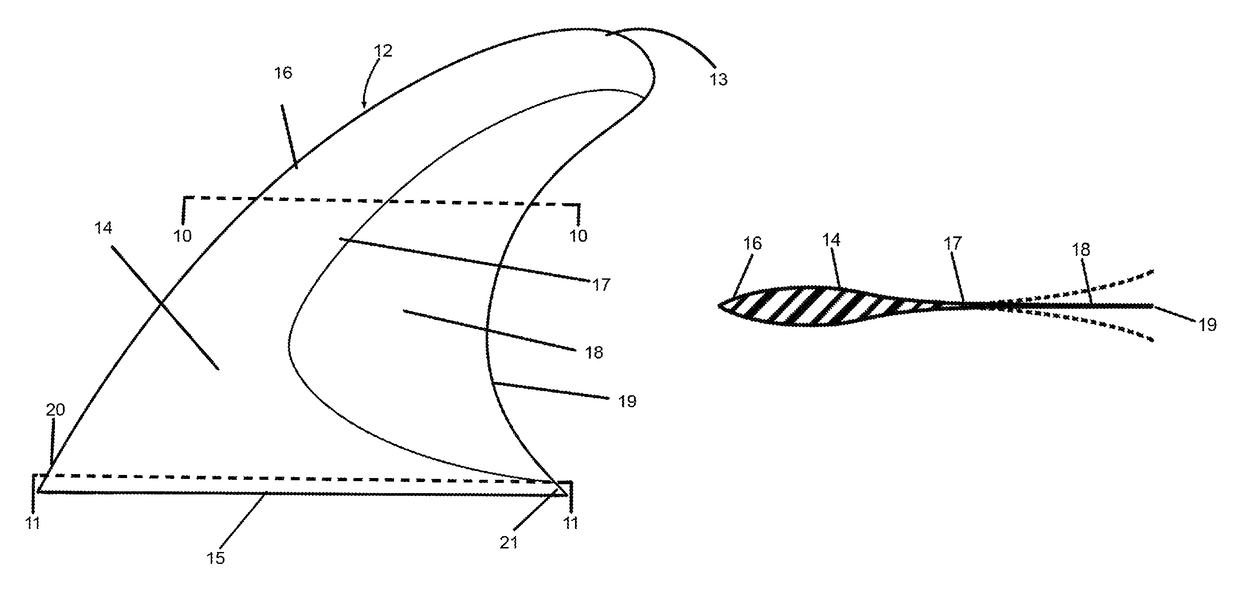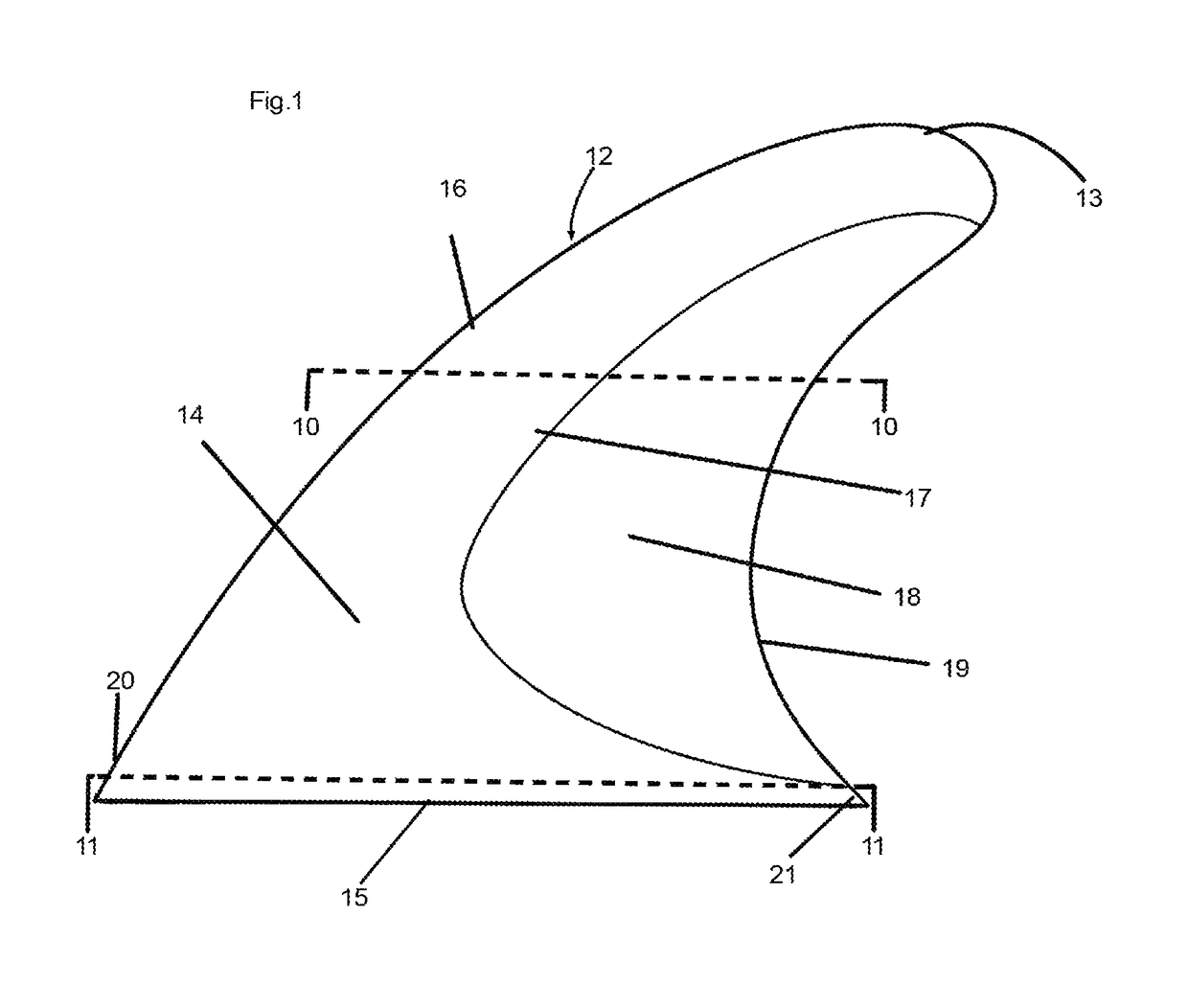Biomimic design stabilizing fin or keel for surface planing or submerged watercraft
a technology of surface planing or submerged watercraft, which is applied in the direction of waterborne vessels, special-purpose vessels, vehicles, etc., can solve the problems of limited functionality of devices and loss of control of watercraft by operators, and achieve the effect of reducing the volume of fins or keels, and reducing the total volum
- Summary
- Abstract
- Description
- Claims
- Application Information
AI Technical Summary
Benefits of technology
Problems solved by technology
Method used
Image
Examples
Embodiment Construction
[0009]The present invention relates to fins and keels that are utilized for dimensional stability and control of watercraft in motion planing on water surface or submerged.
[0010]The present invention improves on current fin or keel designs by utilizing a thin flexible element positioned in the rear trailing edge area of fin or keel and providing leading edge to trailing edge lateral flex to fin or keel providing increased stability, control, and efficiency of a surface planing or submerged watercraft in motion by reducing a fin or keels development of a cavitating flow in the laminar flow boundary, reducing turbulence in laminar flow exiting a fin or keel and reducing fin or keel weight. Cavitating flow occurs when water pressure or hydrodynamic increases on the inner radius side of fin or keel and decreases on the outer radius side of fin or keel during directional changes (i.e. turns or tacks). When the water pressure or hydrodynamic pressure becomes too great on the inner radius ...
PUM
 Login to View More
Login to View More Abstract
Description
Claims
Application Information
 Login to View More
Login to View More - R&D
- Intellectual Property
- Life Sciences
- Materials
- Tech Scout
- Unparalleled Data Quality
- Higher Quality Content
- 60% Fewer Hallucinations
Browse by: Latest US Patents, China's latest patents, Technical Efficacy Thesaurus, Application Domain, Technology Topic, Popular Technical Reports.
© 2025 PatSnap. All rights reserved.Legal|Privacy policy|Modern Slavery Act Transparency Statement|Sitemap|About US| Contact US: help@patsnap.com



